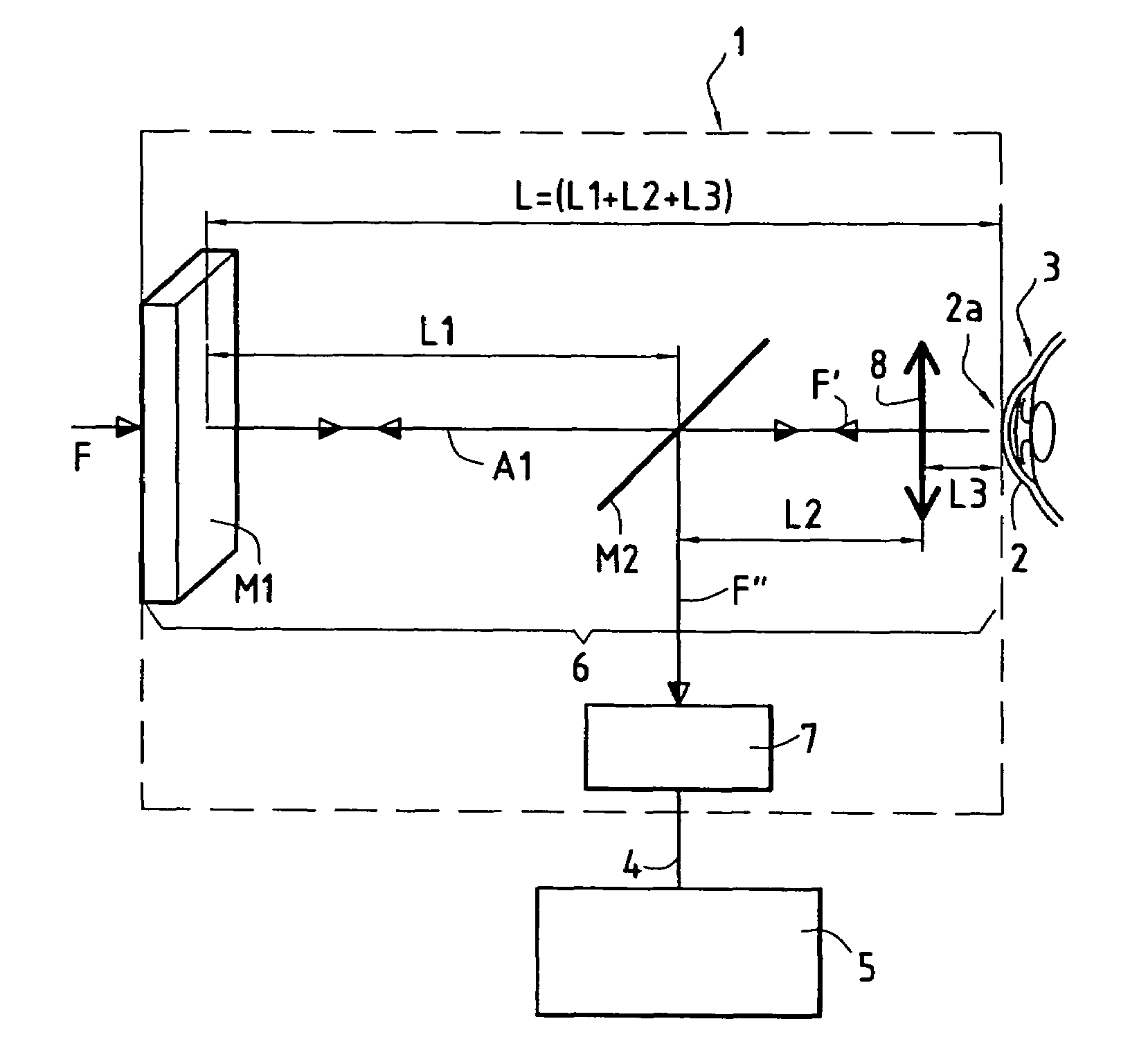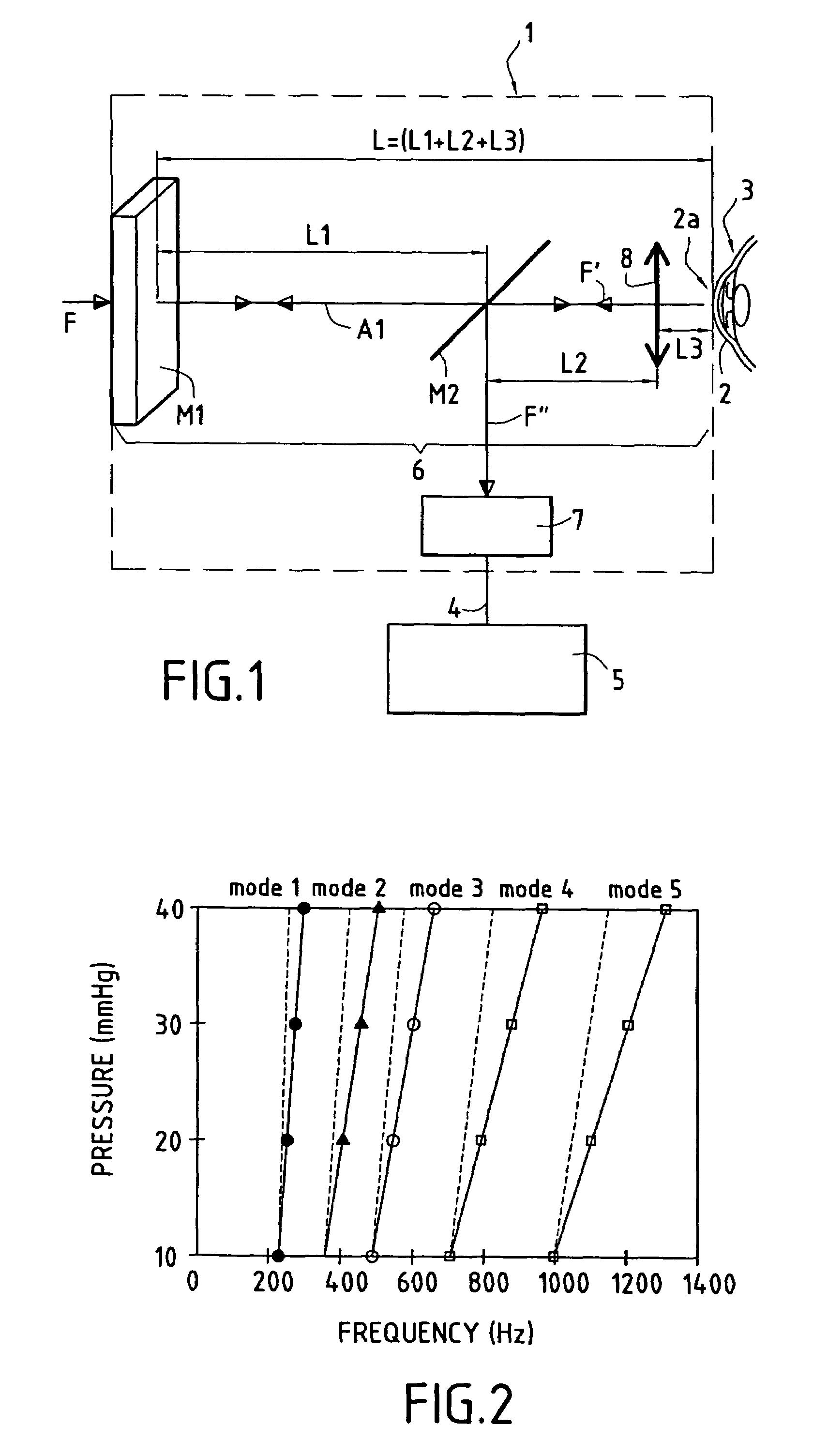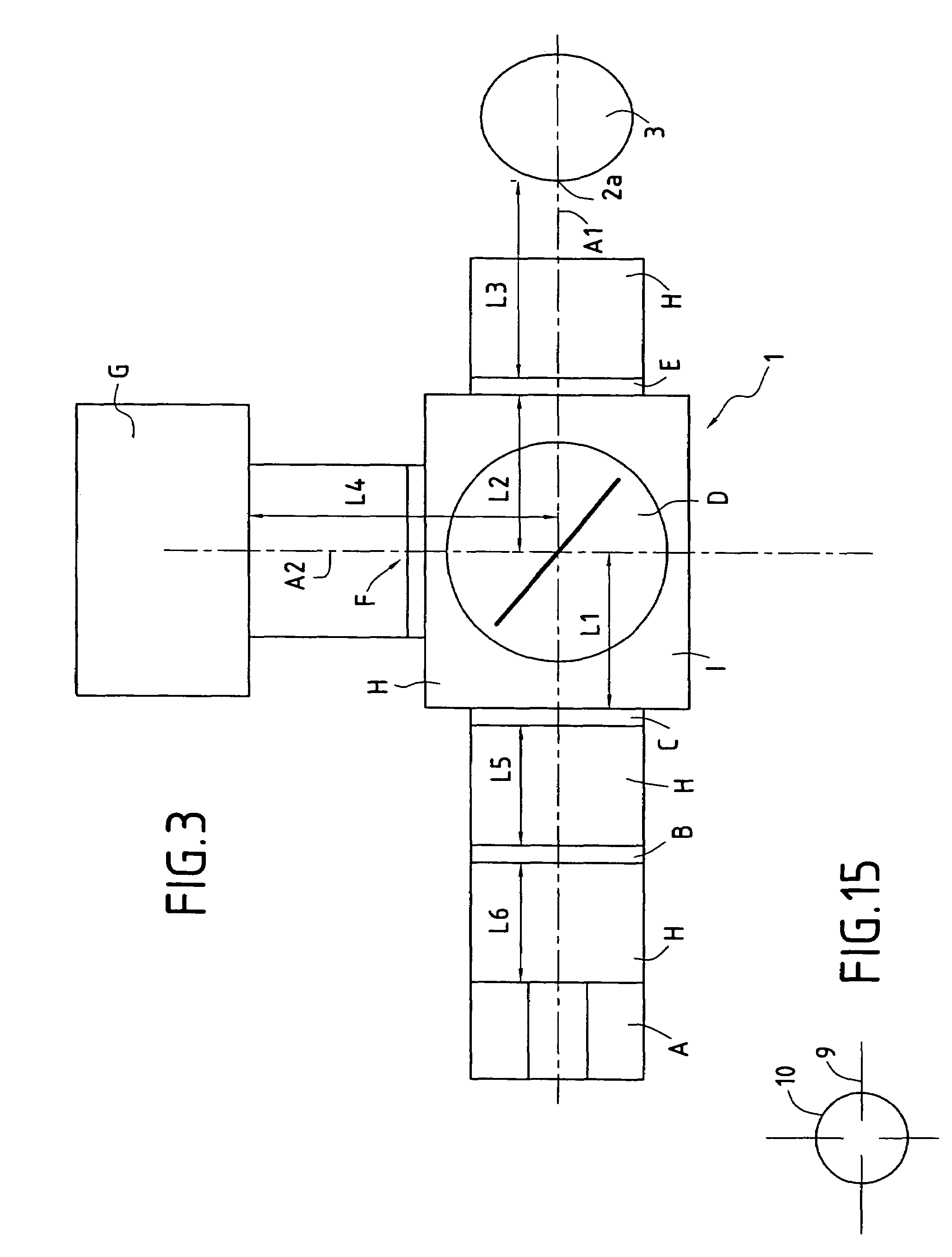Method and apparatus for detecting natural modes of vibration of an eye by laser interferometry, and an application thereof to measuring intraocular pressure
a technology of laser interferometry and natural mode of vibration, applied in the field of ophthalmology, can solve the problems of eye trauma, eye vibration, eye vibration, etc., and achieve the effects of less constraining eye positioning, less sensitive, and lower power laser
- Summary
- Abstract
- Description
- Claims
- Application Information
AI Technical Summary
Benefits of technology
Problems solved by technology
Method used
Image
Examples
Embodiment Construction
[0026]The apparatus of FIG. 1 comprises:[0027]a device 1 that enables vibration of the cornea 2 of an eye 3 to be detected optoelectronically by laser interferometry, and that delivers a time-domain electrical signal 4 characteristic of the variation in the amplitude of the vibration of the cornea 2 over time; and[0028]an electronic system 5 for processing the signal, which system is designed initially to compute the frequency spectrum of the time-domain signal 4, e.g. by computing the Fourier transform of the signal 4, and secondly to determine the frequency of at least one natural mode of vibration of the eye from said frequency spectrum.
[0029]The contribution of the invention lies essentially in the detection device1, which is described in detail below. The two above-mentioned computation steps performed by the electronic system 5 and the means needed to implement them are known to the person skilled in the art of signal processing and they are not described in detail in the pres...
PUM
 Login to View More
Login to View More Abstract
Description
Claims
Application Information
 Login to View More
Login to View More - R&D
- Intellectual Property
- Life Sciences
- Materials
- Tech Scout
- Unparalleled Data Quality
- Higher Quality Content
- 60% Fewer Hallucinations
Browse by: Latest US Patents, China's latest patents, Technical Efficacy Thesaurus, Application Domain, Technology Topic, Popular Technical Reports.
© 2025 PatSnap. All rights reserved.Legal|Privacy policy|Modern Slavery Act Transparency Statement|Sitemap|About US| Contact US: help@patsnap.com



